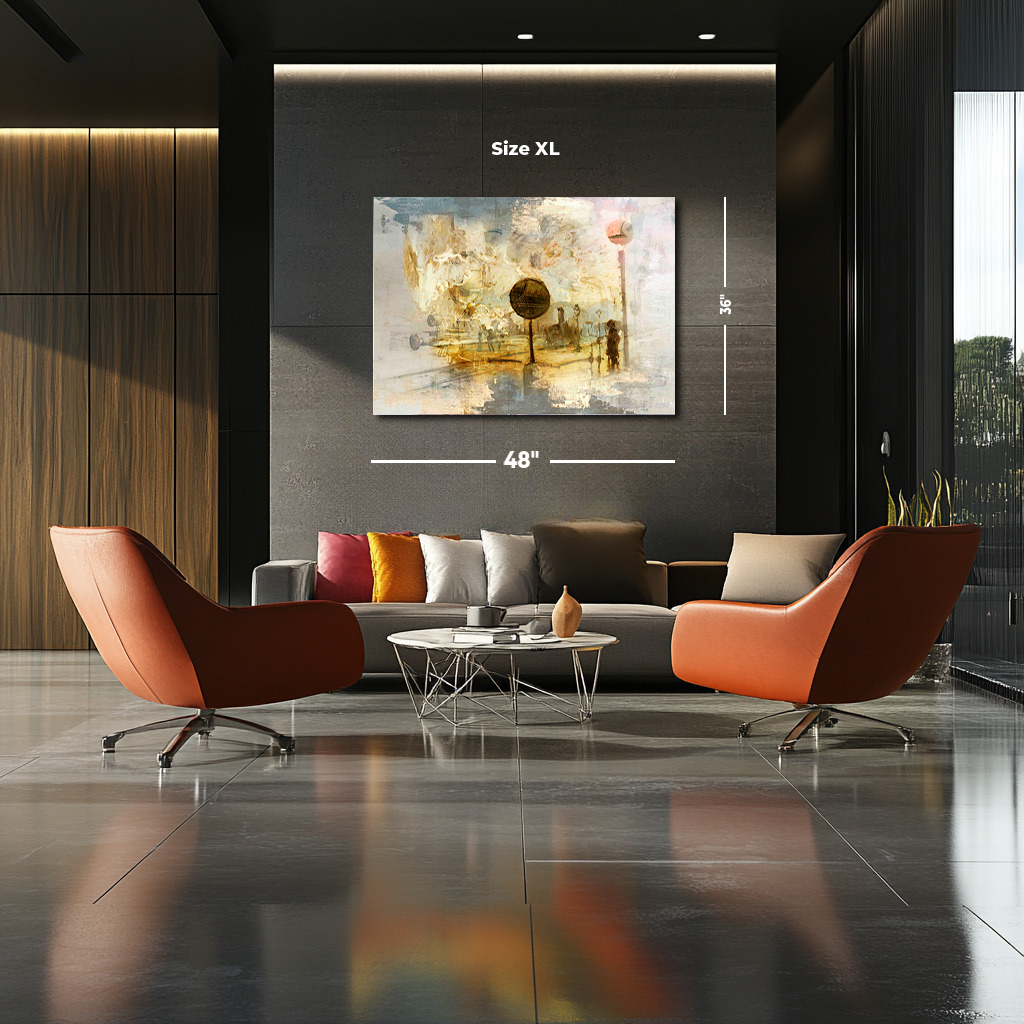Signals of Time: The Echoes of Saint-Lazare
This surreal reimagining of Monet’s Track Signals Outside Saint-Lazare Station transforms the industrial landscape into a dreamlike meditation on time and transition. The railway signals, once simple markers of movement, now glow as cosmic waypoints, guiding not just trains but memories and choices. A lone figure stands at the edge of time, caught between motion and stillness, watching as history fades and reforms in the steam-filled air. The golden hues and shifting brushstrokes create a sense of nostalgia, blurring the boundaries between past and present. This artwork explores the idea that progress is not just about movement—it is about the moments of stillness that define the path ahead.
Please see Below for Details…
Hotline Order:
Mon - Fri: 07AM - 06PM
404-872-4663
Claude Monet’s Track Signals Outside Saint-Lazare Station , painted in 1877, was a testament to the industrial age, where steam and movement became a new kind of landscape. It captured the energy of Paris as it shifted into modernity, with trains billowing smoke, tracks converging in the distance, and signals standing as silent sentinels of the bustling world. The original painting was filled with the chaos and beauty of industrial progress, where impressionistic strokes gave movement to an otherwise mechanical scene.
In this collage reinterpretation, the station no longer simply belongs to a moment in history—it exists in a fluid realm where time distorts, reality shifts, and the boundaries between past and present blur. The once-solid signals and platforms dissolve into layers of abstraction, their forms bending and stretching as if echoing across different timelines. The steam, once a mere byproduct of locomotives, now curls into dreamlike wisps, shaping unseen figures in the mist. The tracks seem to unravel, no longer guiding passengers to destinations but leading into a horizon that fades into memory itself.
At the heart of the composition, a solitary figure stands, caught in the stillness of movement. The person is an observer, a traveler who could belong to any era, watching as the signals pulse with time’s shifting rhythm. The familiar round railway signal has transformed into a cosmic marker, a symbol that transcends the industrial purpose of its origin. It becomes a metaphor for choice, a moment of pause before a decision, an intersection between moving forward and standing still.
The color palette shifts from the deep metallic grays and blues of Monet’s original scene into a spectrum of warm golds, faded sepia, and ethereal whites. This shift in tone creates a sense of nostalgia, as if the moment captured is both slipping away and reappearing at once. The edges of the composition fade into brushstrokes and fragmented textures, suggesting the impermanence of memory, the way history layers upon itself, constantly rewritten by those who view it.
As an artist, I wanted to push the themes Monet explored—movement, change, and observation—into a realm where they become universal. The Saint-Lazare station, once a symbol of progress, now represents something far greater: the way humanity moves through time, the way decisions ripple across existence, and the way we stand at intersections of change, unsure of what lies ahead. The signals remain, not as mere mechanical tools, but as markers of transition, urging the viewer to consider what it means to wait, to watch, and to move forward.
The reinterpretation of this piece is a meditation on modernity and nostalgia, on the way the industrial past has given way to a digital present. The signals no longer direct only trains—they direct thought, memory, and imagination. Are we passengers in time, or are we the ones setting the signals, determining our own path? The blurred, almost spectral figures in the distance suggest that history is not something fixed but something we carry with us, an echo that lingers long after the train has passed.
Add your review
Your email address will not be published. Required fields are marked *
Please login to write review!
Looks like there are no reviews yet.










